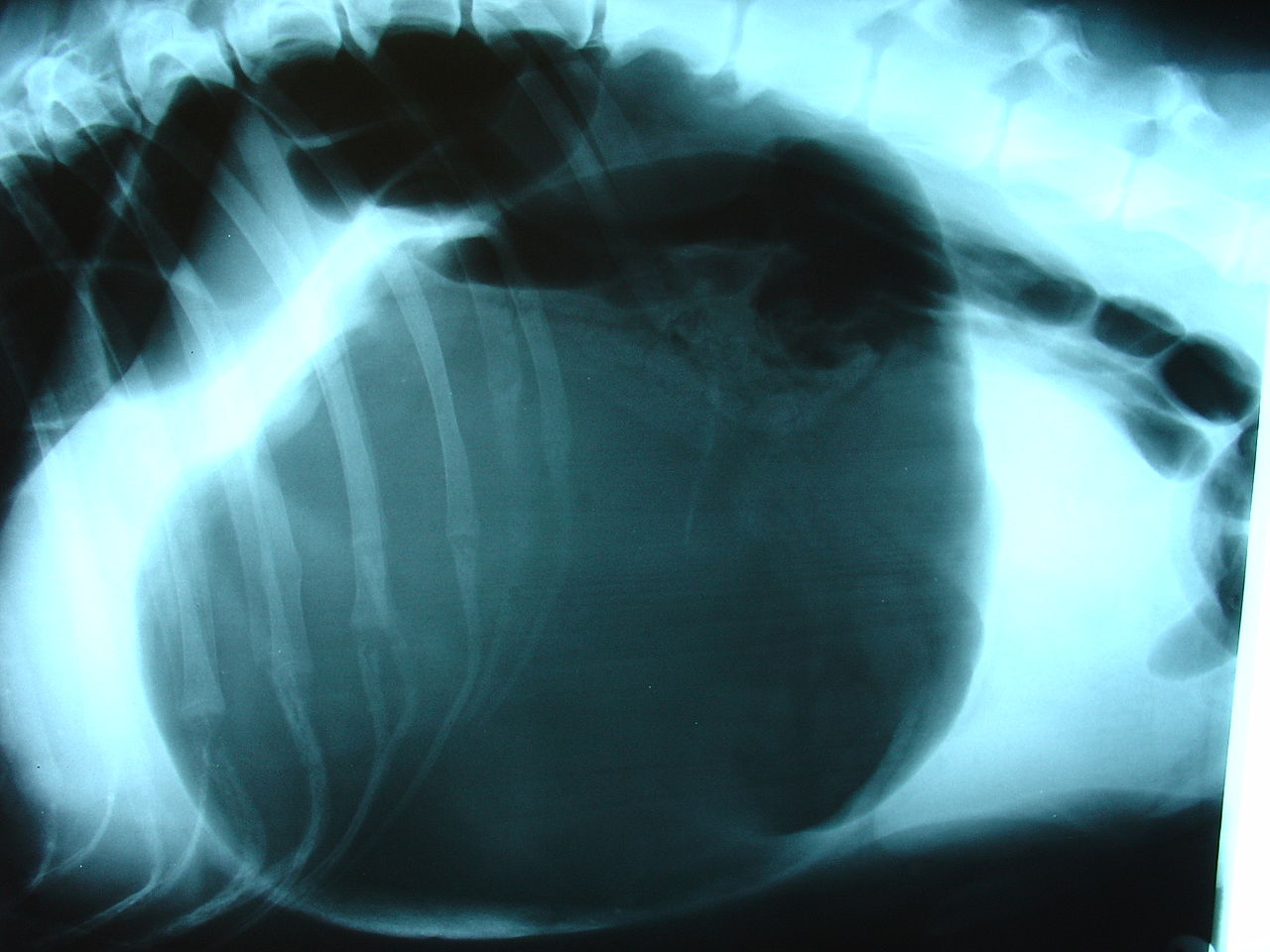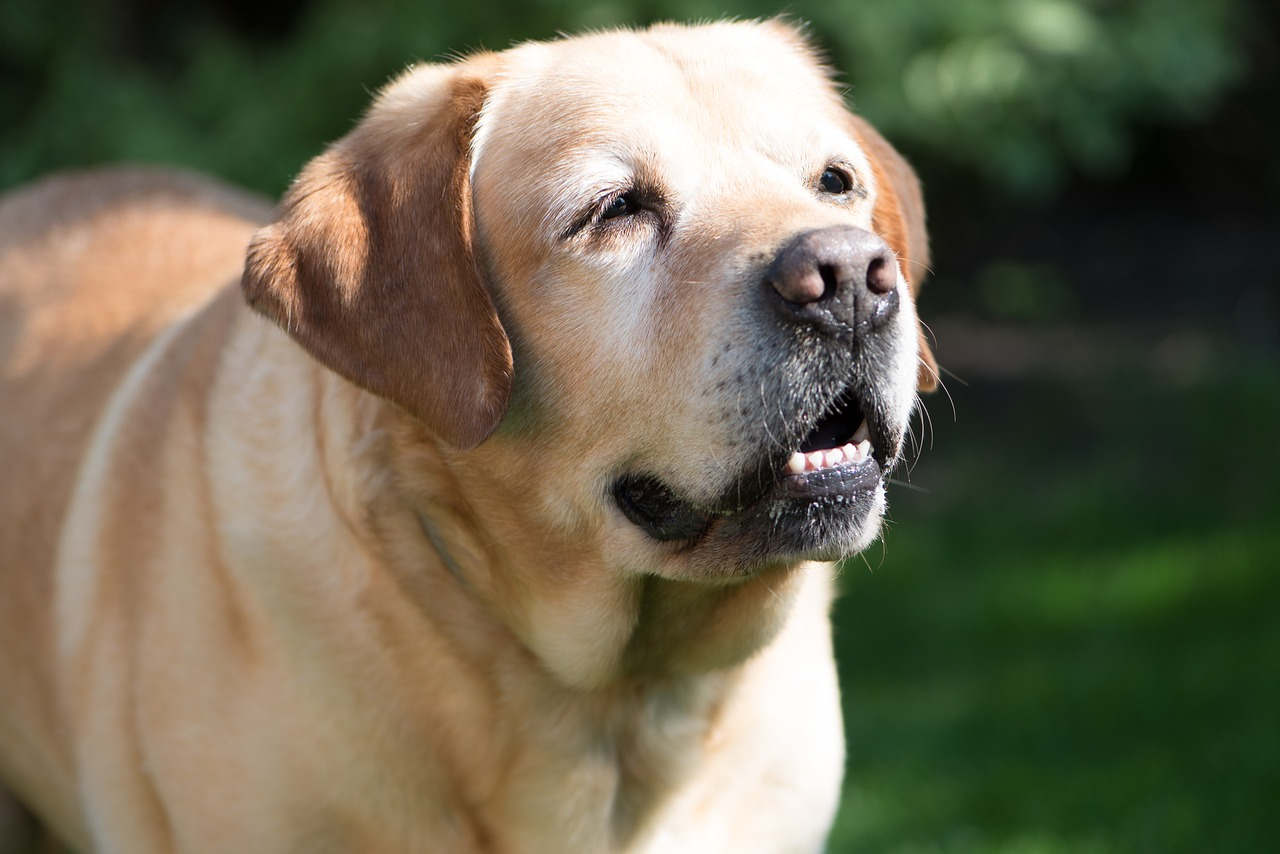Bloat or Gastric dilatation-volvulus (GDV), also known as gastric dilation, twisted stomach, or gastric torsion is the second leading killer of dogs.
BLOAT is a canine medical emergency.
BLOAT can occur in two forms: gastric dilatation (swelling of the stomach from gas); or, gastric dilatation with volvulus, i. e., torsion, which occurs when the stomach twists on its axis. Often, both forms of bloat occur in a single episode with the second form quickly following the first.
When this happens, BLOAT is fatal in minutes. BLOAT is also known as gastric dilatation-volvulus or GDV.
Tragically, the majority of dog owners have never heard of BLOAT. Typically, an owner awakens in the morning or returns home from work and finds dead his/her, otherwise healthy, dog.
As dog owners rarely have an autopsy performed, the cause of death is never determined, and the owner never learns about BLOAT.
Most canine diseases (e. g., cancer, hip dysplasia, etc.) progress over weeks, months or even years, not minutes.
The dog owner has the opportunity to notice that his/her dog is not feeling well and has time to take the dog to the vet to begin a course of treatment. Along with the treatment the owner learns about the disease.
With BLOAT, the disease progresses in minutes or, at most, hours.
The only treatment is emergency medical attention.
In its two advanced forms, the only treatment is surgery. Symptoms of BLOAT may include:
• excessive salivation/drooling
• extreme restlessness/pacing
• unproductive attempts to vomit/defecate
• evidence of abdominal pain (whining and tenderness in the stomach area)
• abdominal distension
• rapid breathing/panting
• cold/pale mouth membranes
• collapse
The following factors have been identified as “non-dietary risk factors” for BLOAT:
- Using a raised food bowl – 110% risk increase associated with using a raised food bowl
- Speed of eating (1-10 scale) – 15% risk increase for each unit increase in speed of eating
(for dogs weighing from 49 to 100 pounds) - Age in years – 20% risk increase for each year increase in age
- Chest depth/width ratio (1.0 to 2.4) – 170% risk increase for each unit increase in chest
depth/width ratio - First degree relative with BLOAT – 63% risk increase associated with having a first degree relative with BLOAT (First degree relative is defined as a sire, dam, litter mate or offspring.)
In addition to the risk factors listed above, many veterinarians believe that stress also causes BLOAT.
Dog owners can’t do anything about a dog’s age (risk factor 3), a dog’s anatomical structure (risk factor 4) or a dog’s genetics (risk factor 5). Owners can, however, do something about risk factors 1 and 2.
Risk Factor 1 – Using a raised food bowl: Many manufacturers and pet suppliers are making claims that the raised feeder or dog bowl aids a dog’s digestion and prevents bloat.
We have found no scientific research to support these claims. The Glickman et al study found that use of a raised feeder actually increases the risk of bloat by 110%. This risk factor can be eliminated by not feeding dog from a raised food bowl. Dr. Glickman’s data showed that “approximately 20% and 50% of cases of GDV among the large and giant breed dogs, respectively, were attributed to having a raised food bowl.” (J Am Vet Med Assoc. 2000;217:1492-1499).
Risk Factor 2 – Speed of Eating: If a dog is a “greedy” eater and weighs between 49 and 100 pounds, then steps should be taken to slow down how fast the dog eats. When a dog gulps food, the dog ingests air with the food. Air ingestion causes gas that may, in turn, cause the dog to bloat. As the research data indicated that speed of eating was a risk factor for large breeds only, we asked Dr. Glickman for his thoughts concerning slowing the speed of eating in giant breeds. He stated that slowing eating rate would not be harmful to giant breed dogs.
FINAL NOTE: It should be noted that Dr. Glickman’s study was confined only to large and giant breed dogs. However, according to Dr. Glickman any breed of dog can bloat.



